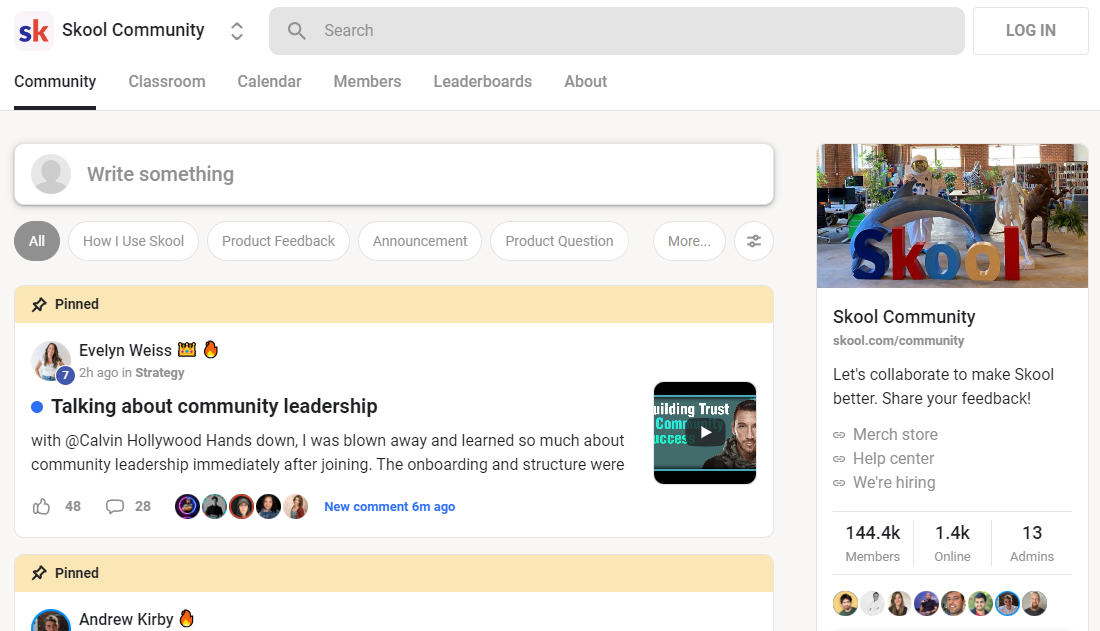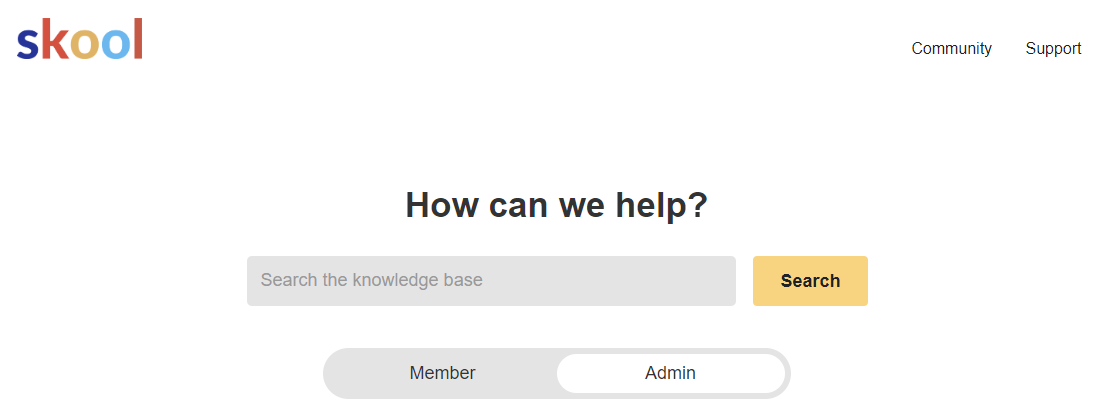Skool supplies best-in-class gamification attributes that improve interaction. For example, participants can earn degrees based upon their engagement, which unlock course web content and various other rewards that even more motivate them.
Previously, creators had to make use of different tools for organizing courses, constructing areas and taking care of email advertising and marketing. This created a disjointed experience for both designers and their audiences.
Creating Courses
Skool has a simple, straightforward interface and prioritizes area structure and training course holding over other functions. It enables developers to develop a lively community for their programs and training programs by attaching them with the best target market. This also helps them keep track of the wellness of their material business with the help of a straightforward dashboard.

To start, an individual can register for a complimentary 14-day test of Skool. Afterwards, they can pay $99 a month for the platform to organize a single community. There are no other prices alternatives readily available for the moment. Skool also refines settlement and pays developers weekly, but it does charge a 2.9% purchase cost.
One of the unique elements of Skool is that it can be utilized to create interactive training courses. These can consist of live webinars, group projects and real-time discussions. These sorts of courses urge engagement and rise course completion rates. Furthermore, Skool’s gamification features assist to encourage area involvement. For instance, participants can gain points and unlock program web content when they get to certain degrees in the area.
Users can additionally make use of the social prey on Skool to upload updates and interact with others in the area. The feed looks like a Facebook group, yet with an extra controlled way of posting. This aids to avoid the type of spam and misuse that occurs on other social platforms.
Taking care of Communities
Skool is a really easy platform to make use of, for both members and admins. Its simplicity is among its main selling factors– when a person joins your area they will not be faced with a number of options or features that can thwart their experience and puzzle them.
The platform starts as a private group by default, but you can quickly alter this to open up your neighborhood to any individual that you intend to become part of it. When you’ve done this you’ll see a social feed like you would on Facebook Groups or WhatsApp (but without all the scam things and swearing).
You can also add a class tab to your neighborhood that you can use to share educational web content with your participants. This function is particularly useful for areas that are focused on learning or specialist development as it aids to create an instructional framework and makes it simple for members to track their progression. In addition, the platform has gamification elements that allow members to earn points by suching as articles or remarks. When they reach a specific level they can open resources, such as courses, even more driving engagement.
The other awesome thing is that Skool has a mobile application, similar to Mighty Networks or Slack, so participants can keep up with your neighborhood and connect on the go. This is a terrific method to motivate and involve your members and to help them obtain support from each other when they require it, instead of just turning to you for solutions.
Who Is The CEO of Skool Community
Skool focuses on gamification, allowing users to gain points and badges for their contributions. This motivates participants to engage with the community and add to conversations. In turn, this helps them level up and unlock advantages like videos and other material. Admins can likewise establish training courses to be opened at specific levels to more drive engagement.

The Skool interface is very clean and instinctive. Its highlights include the Community tab, which looks similar to a Facebook team feed. Below, customers can publish comments and text in addition to upload images, web links and videos. Members can additionally check out each others accounts and connect with them. Furthermore, customers can create private teams in the area to discuss specific topics.
An additional feature of Skool is the Classroom tab, which resembles a YouTube livestream or Zoom conference. Utilizing this, administrators can organize trainings and webinars for their trainees. They can also add occasions in the schedule to stay updated on upcoming occasions and Who Is The CEO of Skool Community.
Nevertheless, some elements of Skool can use renovation. As an example, the platform isn’t adaptable when it comes to money making as users can not supply numerous pricing rates for their programs and neighborhood memberships. In addition, the tool lacks an email advertising and marketing feature, which may be a deal breaker for some course creators. It also doesn’t have indigenous video hosting, implying that customers need to make use of exterior platforms like YouTube, Loom and Vimeo for their videos.
Including Content
The procedure for including material and interacting with members on Skool is simple and uncomplicated. Admins can create blog posts with message, GIFs, videos and polls. They can also include occasion calendars to inform neighborhood members of upcoming team Zoom calls or live streams. Furthermore, they can utilize Skool’s email broadcast feature to send a message to the whole area with a solitary click. This gets rid of the need for identifying and listing segmentation, which can be troublesome.
Furthermore, Skool’s gamification attributes can improve engagement and individual retention. It urges members to communicate with the web content regularly by rewarding them with different rewards. These consist of opening program web content, making points and earning an area on neighborhood leaderboards.
While Skool provides a host of beneficial features for creating and supplying on the internet programs, it’s except everyone. The system is best for trainers, specialists and other information business owners. Nonetheless, the cost can be a barrier for some people looking to monetize their on-line material.
Additionally, the lack of standard tiers and a brief free trial may be a deterrent for numerous. Furthermore, the system’s laser-focus on eLearning can make it less desirable for individuals who intend to sell various other digital products. Nonetheless, regardless of these disadvantages, Who Is The CEO of Skool Community is still a viable choice for any individual wanting to develop and generate income from on the internet courses.